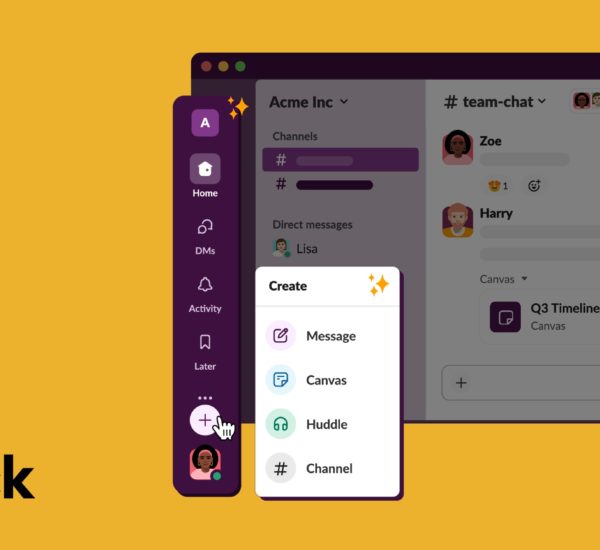Despite coronavirus causing teams to go remote, businesses across the globe have managed to maintain their momentum with online communication tools like Slack and Zoom. Both these softwares have been saviors for teams who need to keep in touch on a daily basis to ensure their work isn’t affected.
If you’re using Slack and Zoom, we have some tips to help you streamline communication with your remote working team and make the best use of the apps.
Best Practices for Using Slack for Remote Working Team
1. Use channels to communicate better
Channels keep your communication more organized. With channels, your employees know where to post questions and updates about specific projects or ideas. Set up different channels for the entire team, departments, dedicated projects, etc.
It’s also easier to go back and look for specific messages when the conversations are organized.
2. Use remind me feature to set up automated reminders
Slack allows you to set up reminders. This is especially helpful when you are in the middle of a task but remembered something you need to do later in the day or week. To use reminders on Slack, you just need to type out your reminders in this way:

Once you send it, Slack notes it down and sends a reminder when it’s time.

The reminder feature is also available for messages you want to later come back to. Click on the message settings and you can set a reminder for yourself to come back to it later.
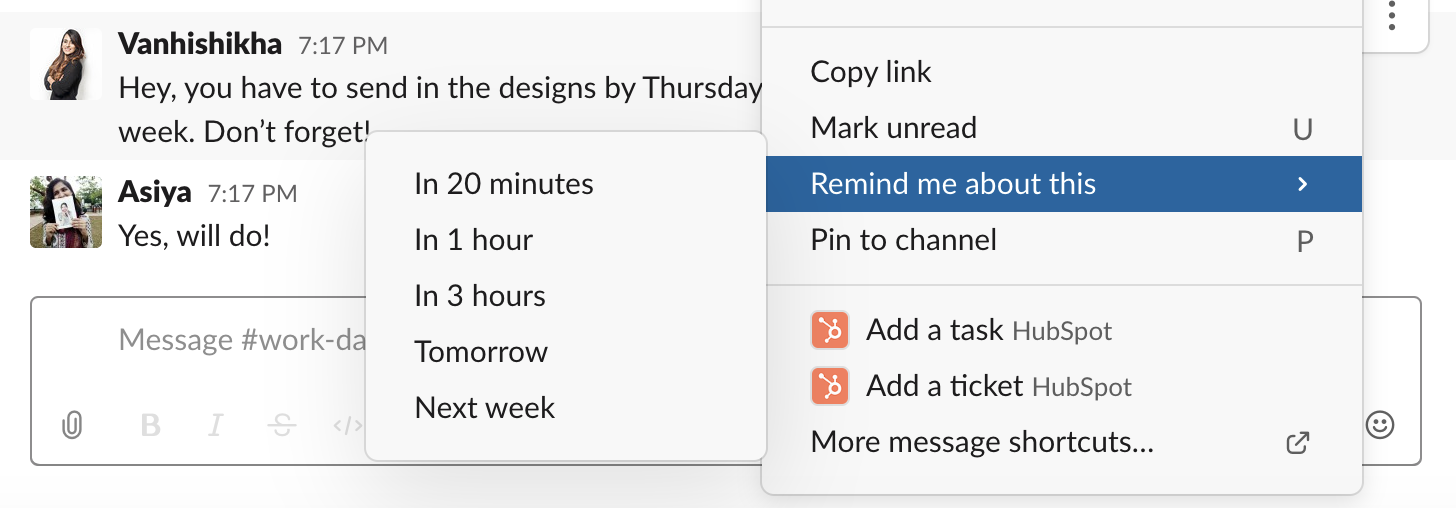
The remind feature ensures that you don’t miss out on important tasks that may usually fall off your plate.
3. Use apps to manage your HR work
Slack’s App Directory has thousands of apps that help you manage your work better. Browse through the directory and set up apps to help you and your team can work more efficiently. Here are a few to get you started:
- OfficeAmp lets employees raise issue tickets.
- Lattice lets you praise employees for their work.
- Donut allows you to facilitate employee bonding.
- Polly helps you set up surveys and polls.
- Scrumgenius automates daily standups by collecting responses.
Read about the 10 Slack HR bots you can set up to make your work more efficient.
4. Snooze during downtime
Ensure your employees have a log-off time where they stop working and put their laptop away. Having this rule can help your employees focus on their personal tasks and step away from their work with ease. When working from home, employees lose a sense of boundaries with their work hours. They end up sending emails even at 11pm!
With away hours set up, employees won’t continue to work when they are supposed to have downtime. Encourage them to snooze notifications on Slack so they aren’t distracted by messages.
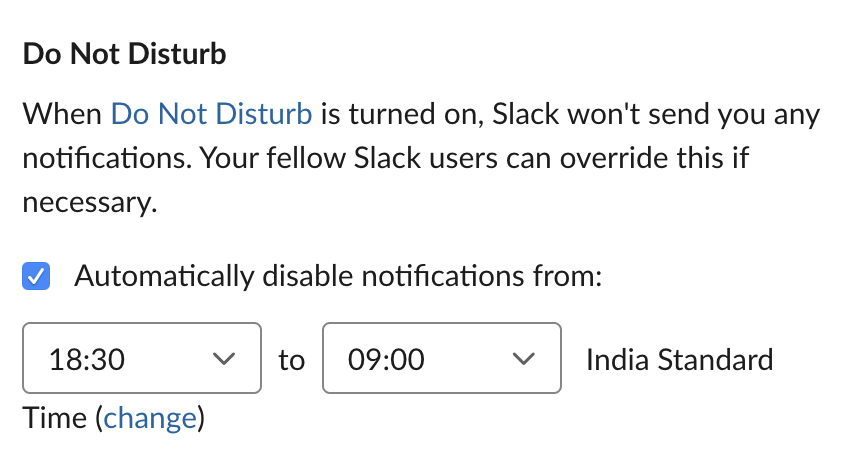
Better yet, ask them to set a custom status that says that they are not working during those hours. This way, employees working in different time zones or schedules can plan communication accordingly.
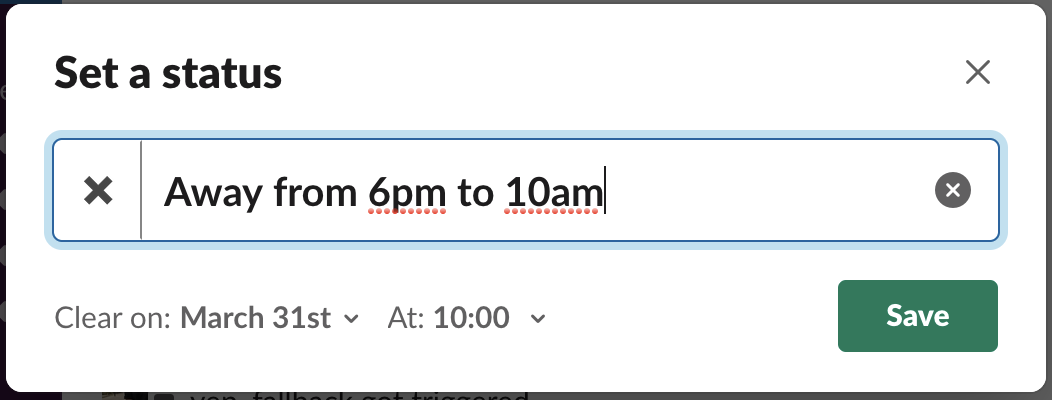
5. Use time tracking to manage shifts and employees better
Time tracking is important to keep your employees more accountable. AttendanceBot is your one-stop solution to time tracking, leave management, and shift planning. With this bot, your employee just needs to send a quick message within Slack and the bot records when they check-in and out of work. This record can be accessed and generated as reports by you.
![]()
The shift planner within AttendanceBot is a drag and drop shift calendar that allows you to visually plan and replicate shift hours with ease. The bot sends a reminder to your shift workers so that they start their shift on time.
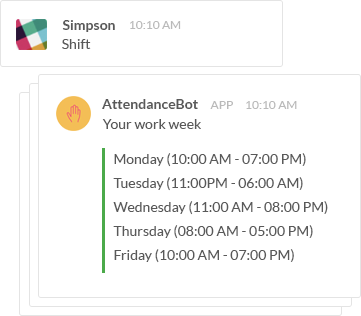
Read this guide to using AttendanceBot for remote working teams
Best Practices for Using Zoom for Remote Working Team
Zoom is the top choice for many remote working teams and remote classrooms. It’s cheaper than other video conferencing apps, providing stable connecting, and clear audio and video for easier communication. Zoom’s extensive features simplify your work.
Here are a few best practices we recommend when using Zoom with your distributed team:
6. Integrate Slack and Zoom to start calls quickly
Set up Zoom within your Slack. With this integration, you can start a zoom call within Slack, no manual link creation needed. Type in ‘/zoom’ within the channel or chat window that you want to start the Zoom call within. Zoom will instantly create and send a meeting room link so that you can start your call immediately.

7. Do team meetings for bonding
Team meetings are a great way to build your team’s connection, despite the distance. Set up weekly or monthly team calls that allow everyone to catch up and have a casual no-shop talk.
Since your team is working remotely, you must ensure that they have opportunities to bond with each other. Such a scheduled meeting can help you facilitate bonding. This is especially important if you are a small team.
If you are a large company, have departmental teams schedule weekly catch-ups so they can sync with work and spend some time chatting with each other, without any pressure to work.
Pro-tip: For such calls, it’s best to enable video so that everyone can see each other and maybe even play a game together.

8. Screenshare for easier work management
Most meetings usually involve discussing a specific project or task. Screensharing can allow everyone on the call to view the same file through Zoom. This helps you walkthrough a document or file while pointing at specific sections, simplifying your virtual meetings.
You can understand each other better with the context of the file or document you are discussing open within the call. With screen sharing, there is fewer misunderstanding and no one feels confused or left out.
Pro-tip: You can pick which screen you want to share— your entire laptop screen, a specific webpage, or the entire browser. If you are switching between tabs, it’s best to choose your laptop screen. Prepare and set up tabs with the files you need so you don’t spend time looking for it during the call.
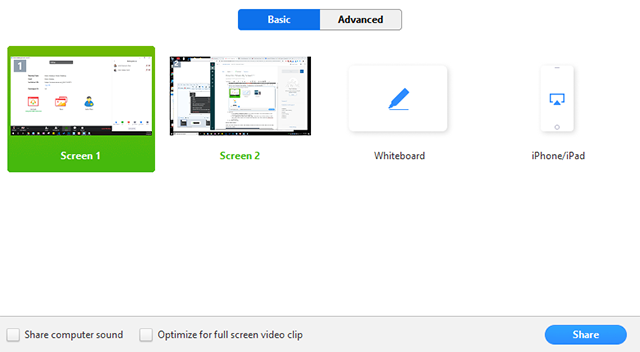
9. Real-time collaboration with Whiteboarding
Zoom’s Whiteboarding feature lets you collaborate and discuss ideas in real-time. Zoom allows you to set up a virtual whiteboard where you and your team member can draw or type on a whiteboard.
Such a feature is especially helping for product roadmapping, feature planning, design, and other such areas. Since many teams use whiteboards in-office to visualize their discussions, having this feature virtually can make it easier to convey what the other person is thinking.
Pro-tip: You can enable or disable participant annotations, depending on whether you are working with them or just showing something.
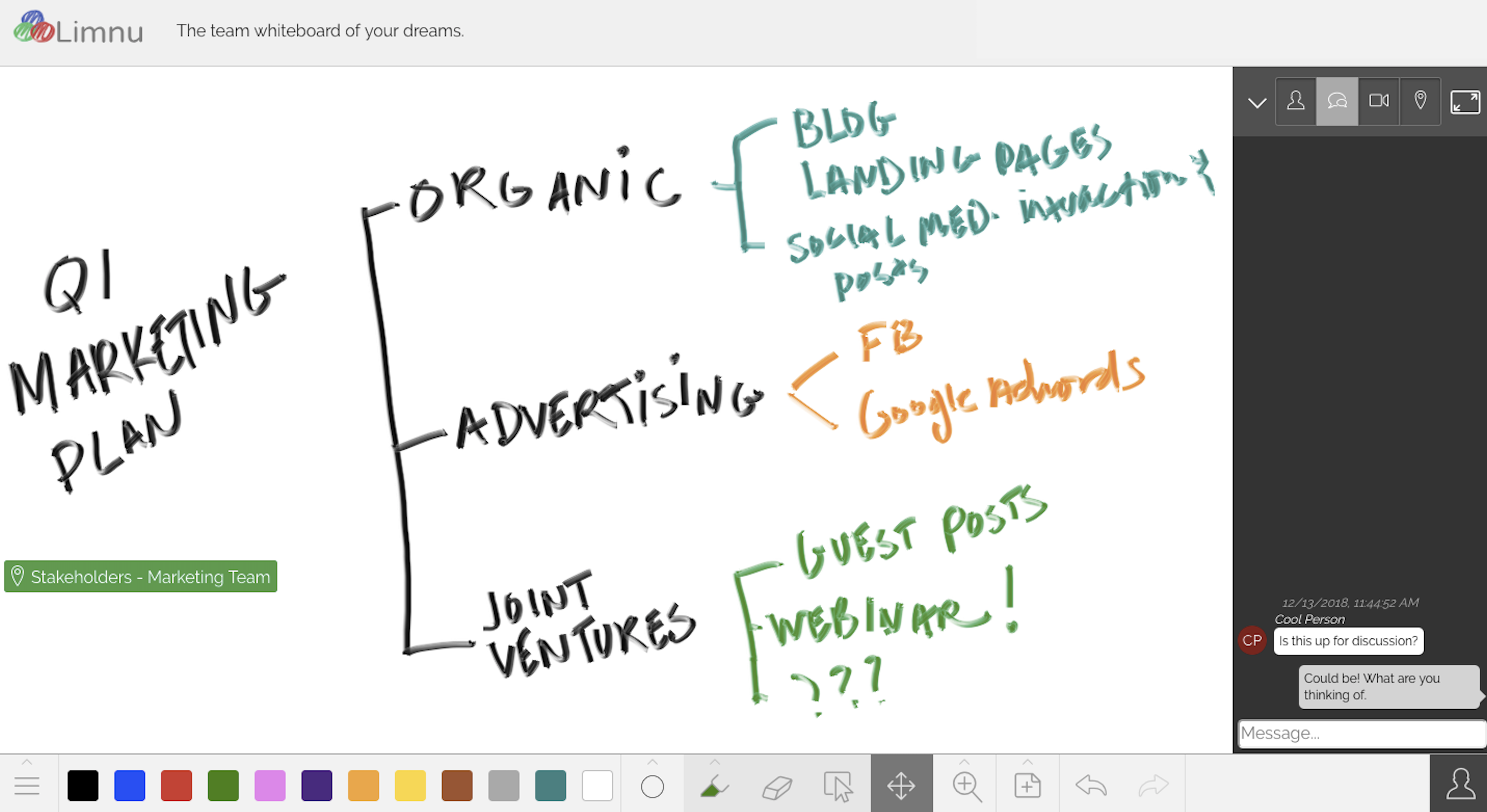
10. Record important calls for easier playback
You’re sure to have calls with a crucial agenda in mind like extensive updates about new features or tactics you may be setting up. For such calls, it’s a good habit to record the call so that employees can go back and listen to it. This way, they can ensure that they haven’t missed out on important details.
Pro-tip: Once the meeting is over, you can share the link to the recording with your team on the relevant Slack channel so that they can reference it. Add keywords that make it easier for employees to search for the file.
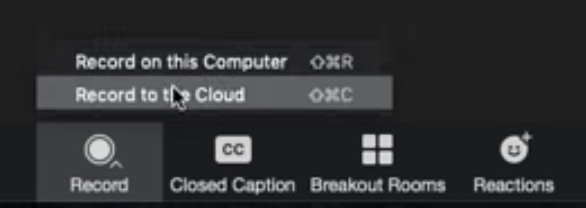
Use Slack and Zoom more smartly when remote working!
We hope these tips make it easier to connect with your team and streamline your processes at work. With collaborative techniques and rules for communication, your team will be more efficient and productive with work.


